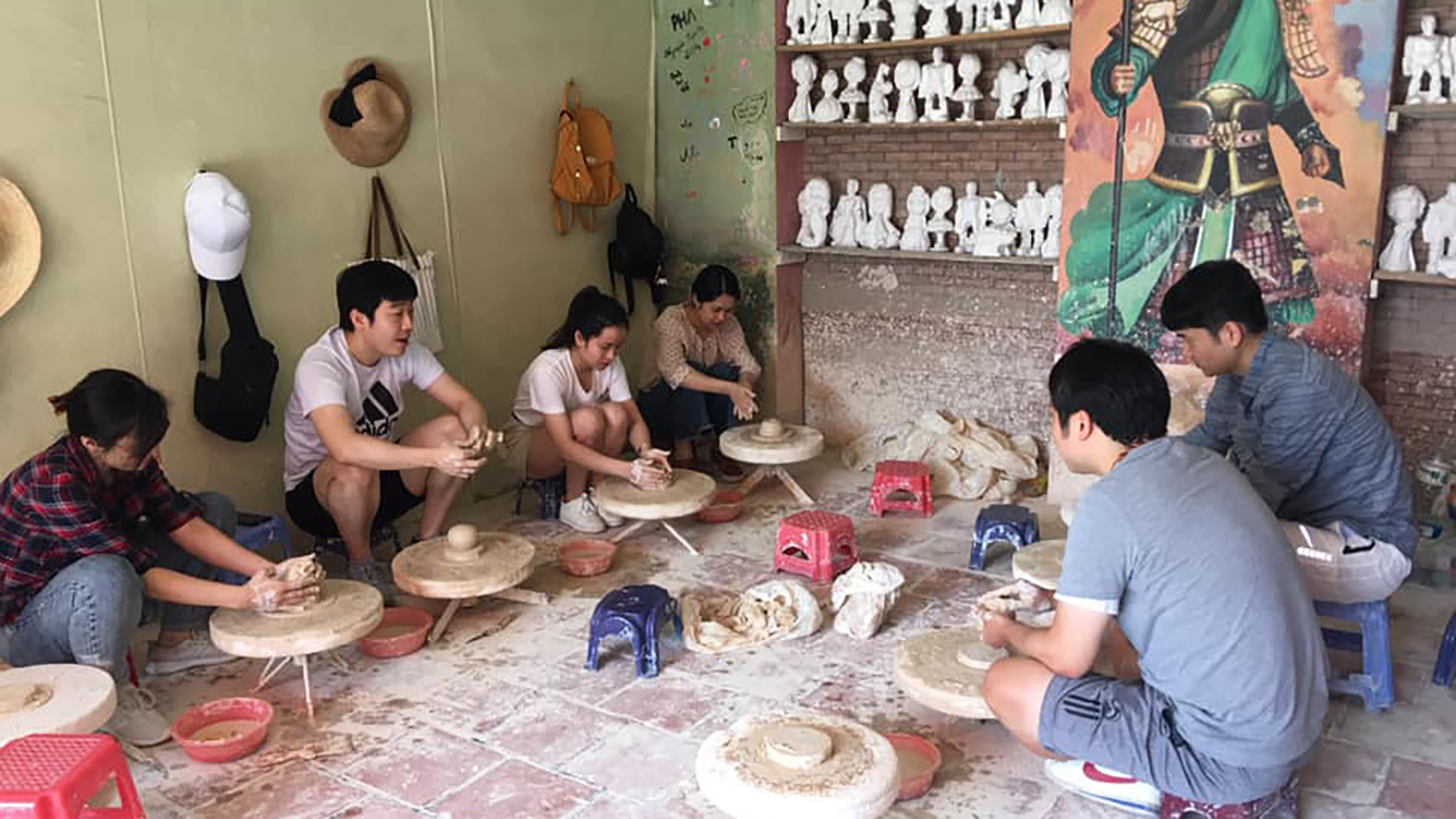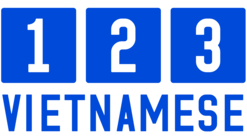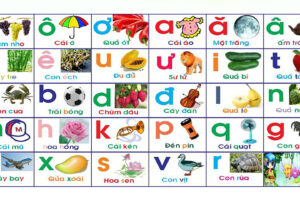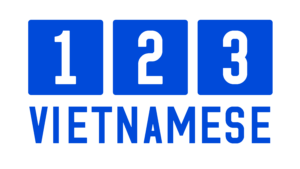
Intergrating culture into the teaching of Vietnamese as a foreign language (Part 1)
1. Introduction
There is an interrelationship between language and culture; therefore, it is commonly agreed that knowledge of target culture is beneficial to the acquisition of a target language. Researchers in many parts of the world have advocated for a more integrated approach with due emphasis on culture in second language teaching and learning.
Vietnamese is taught as a foreign language in many different countries such as America, Australia, China, France, Japan, Korea, and Singapore; to name just a few. However, Vietnamese is still an under-researched language, especially when it comes to Vietnamese as foreign language pedagogy. There is a lack of theoretical and empirical research on culture teaching in Vietnamese language teaching and learning.
In this paper, I will share my experiences of integrating Vietnamese culture to teach Vietnamese as a foreign language to students at a Singaporean university. Three different kinds of projects were used to enhance the students’ Vietnamese cultural awareness. A traveling project, a film review project and a blogging project were conducted to introduce different elements of Vietnamese culture to students of three different proficiency levels. This paper will focus on the rationale, implementation, and benefits of these projects in promoting Vietnamese cultural understanding among the students. Several implications will also be put forward to help enrich the teaching of Vietnamese as a foreign language.
In the following part of this paper, I will briefly review the literature on language and culture, and experiential learning in foreign language teaching and learning. After that, I will give a short description about the Vietnamese Language Program at the National University of Singapore and the implementation of the afore-mentioned projects.
2. Culture, experience and foreign language education
The language and culture relationship has been the subject of interest of theoreticians and practitioners from many different disciplines. Most researchers share the view that language is inseparable from culture. Gumperz and Hymes (1972) (cited in Hinkel, 1999) held the view that uses of language and its analyses are inseparable from the society, specific sociological situations, the interlocutors’ social backgrounds and identities. This sociolinguistic view of language and culture is supported by Kramsch (1991) who stated that culture and language are inseparable and constitute “a single universe or domain of experience” (p.217). Other researchers also study and discuss the connection of language, culture and thought. According to Brown (2000) “Culture is really an integral part of the interaction between language and thought. Cultural patterns of cognition and customs are sometimes explicitly coded in language.” (p.198)
Due to the interrelationship between language and culture, culture learning does play an essential part in language learning. According to Hinkel (1999), there is an increasing awareness among applied linguists and language teachers that foreign language education can rarely take place without addressing the culture of the community in which it is used. Byram (1989) also asserted that language teaching can rarely take place without teaching the culture of its speakers. Since culture teaching is “a central if hidden strand of foreign language curriculum” (Byram, Esarte-Sarries, and Taylor, 1991, p.6), it is understandable that second and foreign language learners need to become learners of the second culture (Kramsch, 1993).
Since this paper discusses the role of culture in Vietnamese language learning, it is deemed necessary to mention the author’s view of language learning. I adopted Kohonen’s (2001) view on language learning as: “Language learning involves a broad range of complex thinking and learning skills and emphasizes the importance of such qualities as self-direction, self-control, self-reflection and a capacity for responsible social interaction” (p.2). This view of language learning places great emphasis on the role of experience in learning. According to Kohonen (2001, p.27) “a central tenet in experiential learning is that learning involves the whole person, including the emotional, social, physical, cognitive and spiritual aspects of personality.”
3. Vietnamese Language Programme at the National University of Singapore
Vietnamese has been taught at the National University of Singapore for about fifteen years as an elective subject for Singaporean and international students. Most of the students enrolled in the Vietnamese Language Programme are undergraduate students majoring in Arts, Engineering, Science, or Business. Six modules are offered with three proficiency levels: Elementary (Vietnamese 1 and Vietnamese 2), Intermediate (Vietnamese 3 and Vietnamese 4), and Advanced (Vietnamese 5 and Vietnamese 6). Each module is taught in one semester with a total number of 50 contact hours.
The cultural projects discussed in this study were offered to students enrolled in three modules Vietnamese 1, Vietnamese 2 and Vietnamese 3. The proficiency levels of these students range from absolute beginners to pre-intermediate. Most of the students have Chinese speaking background. While some of the students have visited Vietnam, the majority have not; therefore, it can be said that the students have limited exposure to Vietnamese culture.
In an end-of-semester survey, most of the students mentioned that what they liked the most about the modules were the different interesting cultural projects and class activities which exposed them to Vietnamese culture throughout the course. In some interviews that I conducted with the students, they said that an interest in Vietnamese culture and way of life motivated them to start learning Vietnamese and that the more they got to know the Vietnamese people, the more they were motivated to continue learning Vietnamese.
4. The rationale and implementation of three culture-related projects
As clearly seen in the literature, it is important to incorporate cultural elements in language teaching. It is evident from my observation and preliminary research that the inclusion of different elements of Vietnamese culture is motivating to students. Bearing in mind the need to expose students to different aspects of Vietnamese culture which are suitable to their proficiency levels, and interesting and motivating to them at the same time, the Vietnamese Language Programme has organized different culture-related projects for its students. In this paper, three different projects for three levels of students will be discussed. These projects contribute towards the students’ final grade together with other forms of assessment such as written tests, oral tests, vocabulary quizzes, homework and class participation.
4.1. Cooking project
This project was introduced to students in their very first semester of learning Vietnamese with two main purposes: to create bonding between the students and teachers, and to help students have first-hand experience with Vietnamese culture through its cuisine. For this project the students worked in a group of four or five and learnt to cook a Vietnamese dish under the guidance of their Vietnamese teachers. A cooking project day was organized so that all the students could cook their dishes, observe other groups’ cooking and taste food prepared by themselves and others. After the cooking session, each group was required to write a blog entry to describe their cooking experiences and post on the class blog www.lavatnus.blogspot.com.
4.2. Film review project
The film review project was set up for Vietnamese 2 students. A movie screening session was organized to show the students one of the well-known Vietnamese films such as Chuy n c a Pao, Bao gi cho ñ n tháng mư i, or Thương nh ñ ng quê. The film review project was organized to help the students practice listening to Vietnamese in context and be exposed to different aspects of Vietnamese culture as depicted in the selected film. A film screening session was held at the university’s central library where the students could watch the film together with their classmates and teachers. After the screening session, the students were requested to write a short summary of the film and about one character in the film that they liked the most in Vietnamese, and write 20 new Vietnamese words and phrases that they learnt from the film. In addition, they were required to write their self-reflection in English on the similarities and differences between their own culture and the Vietnamese culture they observed in the film.
4.3. Blogging project
The blogging project was for the students enrolled in Vietnamese 3 module with two main purposes: to create a platform for the students to communicate in Vietnamese and to create opportunities for the students to learn more about Vietnam. The students were required to create an account and blog on a popular Vietnamese blogging site www.cyworld.vn. One advantage of blogging on Cyworld Vietnam is that it has only Vietnamese language, which is truly an authentic environment for the students to practice their Vietnamese. The site has various interactive functions such as blog, video, picture, shop, chat room, forum, celebrities’ blogs, etc. For this project, the students were required to sign up for a free account and learn to type in Vietnamese. The students’ tasks were to post a number of blog entries (both textbook-related and free writing) and share a number of articles about Vietnam and write their personal reflections on the content of those articles over a period of ten weeks. The students were encouraged to share some links to videos and songs that they found interesting and useful. The students were also encouraged to comment on their classmates’ blogs and respond to their comments.
Author: Ho Gia Anh Le
(MA, National University of Singapore)









